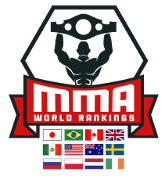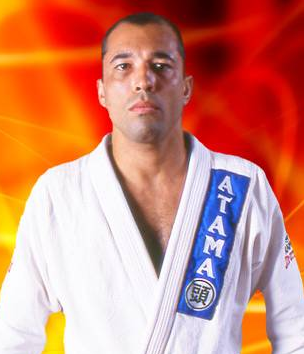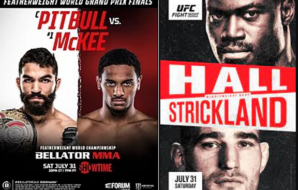-
KO/TKO15/17%
-
SUB15/1280%
-
DEC15/213%
Background
Royce is a member of the Gracie family. He is the son of Hélio Gracie (Helio along with his older brother Carlos Gracie are the originators of Gracie Jiu-Jitsu—Modern Brazilian Jiu Jitsu) and spent his childhood in Rio de Janeiro, Brazil. As a toddler, Gracie learned Jiu-Jitsu from his father and his older brothers Rorion, Relson, and Rickson Gracie. He began competing at the age of 8 and by the time he was 16 had attained the level of black belt.
A year later he was invited by his brother Rorion to help teach Jiu-Jitsu from his garage in America. Despite not knowing English, Gracie accepted the offer and moved to California. He competed in a number of Jiu-Jitsu tournaments in Brazil and the United States and compiled an amateur record of 51–3. Gracie received his black belt in Brazilian Jiu-Jitsu at the age of 18. Gracie is now a 6th degree black belt.
Mixed martial arts career
The Ultimate Fighting Championship
In his first match, Gracie defeated journeyman boxer Art Jimmerson. He tackled him to the ground using a baiana (morote-gari or double-leg) and obtained the dominant “mounted” position, also pinning Jimmerson’s left arm around the boxer’s own neck. Mounted and with only one free arm Jimmerson conceded defeat.
In the semi-finals, Gracie fought Ken Shamrock, who showed excellent grappling skills in his first-round submission win over Patrick Smith. Gracie immediately rushed Shamrock, who sprawled effectively and got on top of Gracie. Shamrock then grabbed Gracie’s ankle and sat back to attempt the same finishing hold he used to finish his first match, but Gracie rolled on top of him and secured a rear naked choke that forced Shamrock to tap the mat in submission. Shamrock later stated that Gracie used his gi suit as a tool for ligature strangulation to perform the submission, protesting the fact that he was not allowed to wear his wrestling shoes because the event organizers had stated that it could be used as a weapon, feeling that the rules for the tournament were created to favor Gracie. Royce disputed the claim and said he had used a no-gi choke, meaning that there is no need to use his gi to apply this choke.
In the finals, Gracie defeated Savate World Champion Gerard Gordeau, taking his opponent to the ground and securing a rear choke.
Over the next year, Royce Gracie continued fighting in the UFC, obtaining submission wins over fighters such as Patrick Smith, 250 pound (113 kg) Taekwondo Remco Pardoel [7] and Kimo Leopoldo. His final UFC victory was in a match that lasted for 16 minutes (there were no rounds or time limits at the time), during which he was continuously pinned underneath 260 pound (118 kg) wrestler Dan Severn. To end the match, Royce locked his legs in a triangle choke for a submission victory. The match extended beyond the pay-per-view time-slot and viewers, who missed the end of the fight, demanded their money back.
Time limits were re-introduced into the sport in 1995 and Ken Shamrock would become the first fighter to survive Royce Gracie’s submission attack and earn a draw. The match lasted for 30 minutes and a 6-minute overtime. The draw sparked much debate and controversy as to who would have won the fight had judges determined the outcome, or had there been no time limits, as by the end of the fight Gracie’s right eye was swollen shut. However, the swollen eye was a result of a standing punch due to a sudden change of the rules in which both of the fighters were restarted on the feet.[8] After this fight the Gracies left the UFC.
At UFC 45 in November 2003, at the ten-year anniversary of the UFC, Ken Shamrock and Royce Gracie became the first inductees into the UFC Hall of Fame. UFC President Dana White said;[9]
| “ | We feel that no two individuals are more deserving than Royce and Ken to be the charter members. Their contributions to our sport, both inside and outside the Octagon, may never be equaled. | ” |
Gracie withdrew from a fight before it began with Harold Howard at UFC 3, due to dehydration after his fight with Kimo Leopoldo.[10][11] Royce entered into the ring and threw in the towel.[12]
PRIDE Fighting Championships
Kazushi Sakuraba, a professional wrestler who derived his foundation in submissions not from jiu jitsu but rather from catch wrestling and shoot wrestling, rose up in the year’s stablemate and master Nobuhiko Takada, before finding himself matched up with Gracie. The two battled for an hour and a half. Early in the fight, Sakuraba nearly ended things with a knee-bar towards the end of the first round. Later on, Royce returned the favor with a guillotine choke. Indeed, the Gracie’s own no time-limit rules began to work against Royce when Sakuraba, displaying much better conditioning, kept punishing Royce instead of going for submissions, prolonging the match.
As the fight wore on however, Sakuraba’s wrestling skills and balance nullified Royce’s ability to score a takedown and—in some instances—even pull guard. Royce’s ever-present jiu-jitsu gi became a weapon for the wrestler to use against him as Sakuraba used it to help him control Gracie on the instances the fight did come to the ground. However, with Sakuraba’s control of the takedown, these instances of ground warfare became increasingly sporadic. After the 90 minute battle of punishing leg kicks, Royce’s brother threw in the towel. Gracie could no longer stand and suffered a broken femur from accumulated damage. Sakuraba would go on to defeat other members of the Gracie family including Renzo Gracie and Ryan Gracie earning him the nickname “Gracie Hunter.”
Gracie returned to PRIDE in 2002 to fight Japanese gold-medalist judoka Hidehiko Yoshida in a Judo vs. Brazilian Jiu-Jitsu limited rules MMA match. Gracie lost that match when the referee stopped the match after Yoshida had sunk in a deep gi-choke. Almost immediately, he contested the loss stating that he was fully conscious when the match was stopped. Later backstage, the Gracies demanded it be turned into a no contest, and an immediate rematch be booked (with different rules for the next time). If not, the Gracie family would pull themselves from PRIDE FC, and never fight for them again.[13] PRIDE, wanting to keep the Gracie family with them, accepted their demands. Afterward, Royce took Rickson’s advice and started fighting without a gi so that his opponents could not stall by holding onto the gi. The grudge match between Yoshida and Gracie had rules more like the standard PRIDE MMA rules. This match took place at PRIDE’s Shockwave 2003 event on December 31, 2003. Gracie dominated Yoshida by outgrappling and outstriking him on the ground.[14] However, as the match had no judge per Gracie’s request, the official decision was a draw after two 10-minute rounds.
In September 2004 Pride had a disagreement with Gracie about his participation in the 2005 Pride Middleweight Grand Prix. Gracie had issues with the proposed opponents and rules (Grand Prix fights must have a winner and cannot end in a draw). He jumped to the competing K-1 organization. Pride sued Gracie for breaching his contract with them. The case was settled in December 2005, with Gracie issuing a public apology, blaming his actions on a misinterpretation of the contract by his manager.
Fighting and Entertainment Group
On December 31, 2004 Gracie entered the K-1 scene at the “Dynamite!” card inside the Osaka Dome, facing off against former sumo wrestler and MMA newcomer Akebono Tarō aka. Chad Rowan under special MMA rules (Two 10-minute rounds; the match would end as a draw if there was no winner after the two rounds). Gracie made quick work of his heavy opponent, forcing Akebono to submit to a shoulder lock at 2:13 of the first round. The match was refereed by renowned MMA ref John McCarthy.
Exactly one year later, on the “Dynamite!” card of December 31, 2005, Gracie fought Japan’s Hideo Tokoro, a 143 pound fighter, in a fight ending in a draw after 20 minutes. Gracie’s original opponent was scheduled to be the tall Korean fighter Choi Hong-man, another MMA newcomer.
Return to UFC
On January 16, 2006, UFC President Dana White announced that Royce Gracie would return to the UFC to fight UFC welterweight champion Matt Hughes on May 27, 2006, at UFC 60. This was a non-title bout at a catchweight of 175 lb. under UFC/California State Athletic Commission rules. To prepare, Gracie cross-trained in Muay Thai and was frequently shown in publicity materials from Fairtex.[15] In round one, Hughes hyperextended Gracie’s arm in a straight armbar, but Gracie refused to tap[16] and held on with a calm expression on his face.
Hughes has stated, in past interviews, that Gracie would rather let his arm break than submit.[17] Hughes went on to win the fight by TKO due to strikes at 4:39 of the first round.
Royce said later after the fight with Hughes that he wanted a rematch and that he wasn’t surprised by Hughes’ performance, “No, we knew what he was planning to do. We worked out his gameplan before the fight, and he did exactly what we expected. I over-trained for the fight. That was all. I started training too much, too hard, for too long. He did exactly what we expected.”[18]
Rematch with Sakuraba
On May 8, 2007, EliteXC announced that Gracie’s opponent for the June 2 K-1 Dynamite!! USA event in Los Angeles, California, would be Japanese fighter Kazushi Sakuraba.
In a largely strategic and uneventful fight, Gracie defeated Sakuraba by a somewhat controversial unanimous decision, not only many viewers and MMA sites felt that Sakuraba won the fight, Sherdog scored it 29–28 in favor of the Japanese fighter,[19] but also due to the fact that Royce was caught with huge levels of Nandrolone in his system, “Use of steroids is simply cheating,” said Armando Garcia, California State Athletic Commission executive director. “It won’t be tolerated in this state.”[20]
Steroids
On June 14, 2007, the California State Athletic Commission declared that Gracie had tested positive for Nandrolone, an anabolic steroid, after his fight with Sakuraba.[21] According to the California State Athletic Commission, the average person could produce about 2 ng/ml of Nandrolone, while an athlete following “rigorous physical exercise” could have a level of around 6 ng/ml. Both “A” and “B” test samples provided by Gracie “had a level of over 50 ng/ml and we were informed that the level itself was so elevated that it would not register on the laboratory’s calibrator,” said the CSAC.[22] Gracie was fined $2,500 (the maximum penalty the Commission can impose) and suspended for the remainder of his license, which ended on May 30, 2008. Gracie paid the fine.[23] The California State Athletic Commission’s Bill Douglas told MMAWeekly, “Currently, our rules do not support overturning a decision based off the drug test results. However, Armando Garcia and I are meeting with the Attorney General next month to begin the process of modifying the existing laws to incorporate those rules for the future. Should everything move along like I anticipate, I would expect to see the changes in place by the end of the year.”[24]
Royce Gracie decided to dispute the allegations during an online video interview on May 2009, more than two years after the fact, saying that his weight in the first UFC event was 178 lb and claiming his weight during his Sakuraba fight was 180 lb, thus only gaining 2 pounds.[25] This was widely disputed by experts as his weight was actually 188 lb for the Sakuraba fight. According to ESPN “Gracie is hardly possessed of an exaggerated physique, but he was clearly more sculpted for his June 2 fight with Kazushi Sakuraba than he was for a May 2006 match with Matt Hughes. In the former contest, he weighed in at 175 pounds; for Sakuraba, he was 188. One may not need to be nutritionist to observe that a muscle gain of 13 pounds in one year at the age of 40 is a strikingly accomplished feat. Athletes nearing the half-century mark are often happy to maintain functional mass, let alone pack it on”.[26]
Retirement
On December 15, 2010 the UFC held a press conference in Rio de Janeiro, Brazil announcing an event August 27, 2011 at the HSBC Arena. During the press conference Royce stated: “This return of UFC to Brazil touched me, made me feel the wish of coming back to the Octagon. Everything is being negotiated with Dana White. Let’s wait”. On March 11, 2011 Royce Gracie’s profile was added back to ufc.com active fighters list as a middleweight. His manager stated that they were actively negotiating with the UFC for a return to the octagon and said it was just a matter of “getting it nailed down” and that there was plenty of time for it.[27] On November 15, 2013 at UFC 167 on the 20th Anniversary of the UFC, Royce Gracie with MMA journalist Ariel Helwani confirmed he had retired from competing in Mixed Martial Arts.[2]
Article source: https://en.wikipedia.org/wiki/Royce_Gracie





